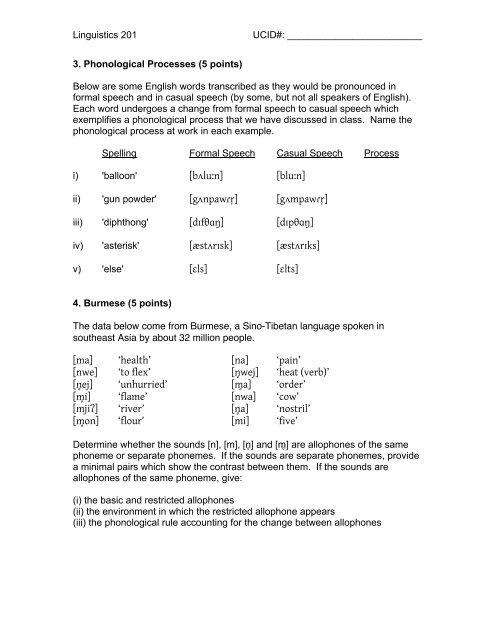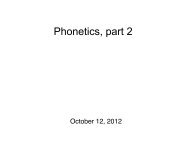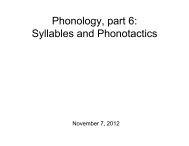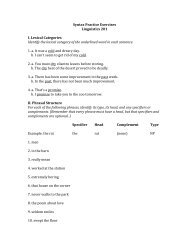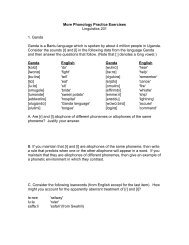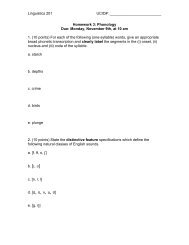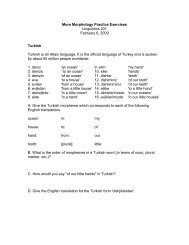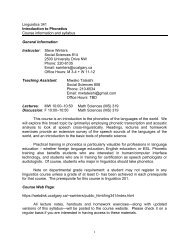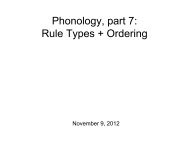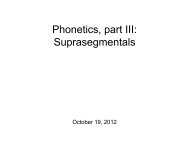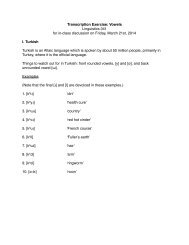Phonology - Basesproduced.com
Phonology - Basesproduced.com
Phonology - Basesproduced.com
You also want an ePaper? Increase the reach of your titles
YUMPU automatically turns print PDFs into web optimized ePapers that Google loves.
Linguistics 201UCID#: _________________________3. Phonological Processes (5 points)Below are some English words transcribed as they would be pronounced informal speech and in casual speech (by some, but not all speakers of English).Each word undergoes a change from formal speech to casual speech whichexemplifies a phonological process that we have discussed in class. Name thephonological process at work in each example.Spelling Formal Speech Casual Speech Processi) 'balloon' [bʌlu:n] [blu:n]ii) 'gun powder' [gʌnpawɾr̩] [gʌmpawɾr̩]iii) 'diphthong' [dɪfθɑŋ] [dɪpθɑŋ]iv) 'asterisk' [æstʌrɪsk] [æstʌrɪks]v) 'else' [ɛls] [ɛlts]4. Burmese (5 points)The data below <strong>com</strong>e from Burmese, a Sino-Tibetan language spoken insoutheast Asia by about 32 million people.[ma] ‘health’ [na] ‘pain’[nwe] ‘to flex’ [n̥wej] ‘heat (verb)’[n̥ej] ‘unhurried’ [mḁ] ‘order’[m̥i] ‘flame’ [nwa] ‘cow’[mjiʔ] ‘river’ [nḁ] ‘nostril’[m̥on] ‘flour’ [mi] ‘five’Determine whether the sounds [n], [m], [n̥] and [m̥] are allophones of the samephoneme or separate phonemes. If the sounds are separate phonemes, providea minimal pairs which show the contrast between them. If the sounds areallophones of the same phoneme, give:(i) the basic and restricted allophones(ii) the environment in which the restricted allophone appears(iii) the phonological rule accounting for the change between allophones


